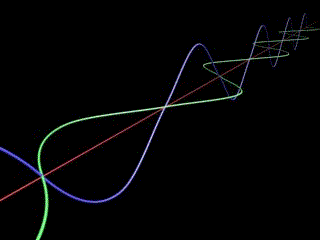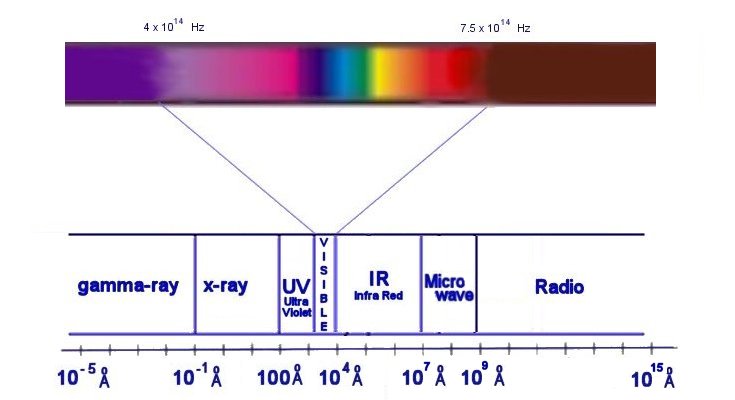Electromagnetic Waves
Electromagnetic Waves
 A changing electric field can give rise to a changing magnetic field, and vise versa. In an electromagnetic wave, the electric and magnetic fields keep each other going so that it can propagate through free space. The frequency of this oscillation determines the energy that the wave will carry. Higher frequency waves such as Gamma rays carry significantly more energy than longer waves like radio waves or visible light. The energy is calculated using the formulae E=hf. Where ‘E’ is energy, ‘h’ is planks constant, and ‘f’ is the frequency.
A changing electric field can give rise to a changing magnetic field, and vise versa. In an electromagnetic wave, the electric and magnetic fields keep each other going so that it can propagate through free space. The frequency of this oscillation determines the energy that the wave will carry. Higher frequency waves such as Gamma rays carry significantly more energy than longer waves like radio waves or visible light. The energy is calculated using the formulae E=hf. Where ‘E’ is energy, ‘h’ is planks constant, and ‘f’ is the frequency.
An electromagnetic wave is a transverse wave, with the electric and magnetic fields oscillating a right angles to each other.
Electromagnetic Spectrum
The electromagnetic spectrum is the full range of frequencies or wavelengths which a wave can oscillate at. The wavelength is the distance a wave will travel during one full cycle or oscillation What our eyes detect as visible light are electromagnetic waves with a wavelength between 750nm and 400nm.

Next Page: Properties of Waves
Previous Page: Magnetic Force
One Comment
Leave a Reply
You must be logged in to post a comment.

RM Cybernetics:
Good day! I am a student who had a research work on the latest application of Electromagnetics on the differents field such as space exploration, aerospace, medicine, engineering etc. I just want to ask you for some information you could give me about the latest applications of electromagnetics.
Please send your message to my email address
Email Address Removed
I am hoping for your kind consideration.
Respectfully Yours:
Kumiho